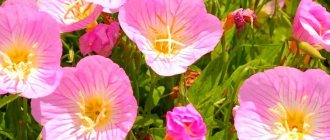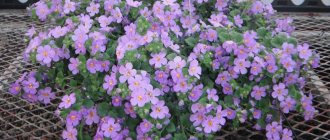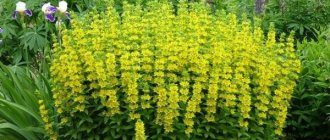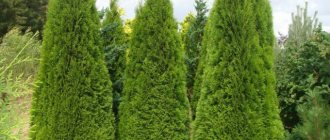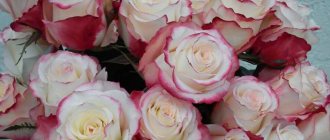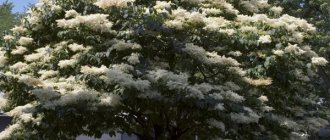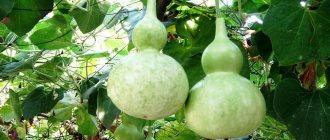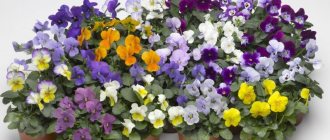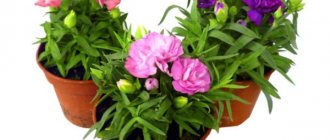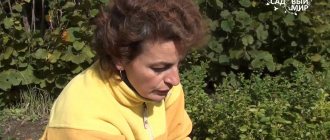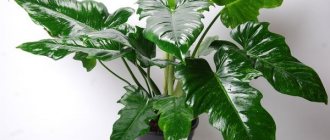Botanical description
Biota is a variety of oriental thuja, which is a tree or shrub with a wide-spreading crown. The plant looks very beautiful, so it becomes a real decoration of any garden or yard.
The bush grows up to 18 m in height, the crown diameter reaches 12 m in diameter. The plant consists of many branches-plates. The leaves have a rich green color, scale-like shape, and are only 1 mm long.
The tree is monoecious; male and female cones are located separately on the tops of the side branches. The cones are small in size - only 15 mm. They are covered with 3-6 scales. Before ripening they have a greenish-blue tint, and after they dry out and become brown. As the buds mature, the scales separate, allowing the seeds to be released.
The main advantage of the eastern biota is its openwork, highly aesthetic crown
The root system of the oriental thuja is mostly superficial, but there are also several deep roots.
Flatweed is one of the trees that live for a very long time. Some specimens live up to several hundred years - on average 150-200.
The tree loves areas open to sunlight, but also tolerates shade well. The plant develops better on loamy and sandy soil, but it can easily grow on less fertile lands. It does not tolerate only too heavy and waterlogged soil.
Preparing for winter
Before the onset of cold weather, the plants are mounded high, sprinkling the trunk near the ground with a layer of peat. The crown is slightly pulled together with a rope and a protective covering is made with non-woven material.
Instead of agrofibre, you can use spruce branches to cover the thuja. When snow falls, a snow shelter is formed on the spruce branches.
Placticladus tolerates frosts down to −20 °C. A mark on the thermometer scale of −25 °C is a threat to the plant. Thuja is very difficult to tolerate sudden changes in temperature during the winter thaw.
Important! You need to remove the cover from an overwintered bush gradually, opening the trunk to protect the needles from sunburn.
When planning landscape design, the characteristics of each variety are taken into account: features, trunk size and height, preference for growing conditions. If you follow these simple rules, the oriental thuja will delight you for a long time with its delicate greenery and chiseled shape.
Pharmacological properties
Oriental biota has healing properties, therefore it has long been used by folk healers to combat various pathological conditions. In ancient times, people used thuja-based products to treat inflammation, infectious diseases, and rheumatism.
The medications were taken as prophylaxis. Therefore, the plant was called the “tree of life.”
The general list of beneficial properties of biota identified by healers is as follows:
- Suppression of the inflammatory process;
- Destruction of pathogenic microorganisms;
- Stopping severe bleeding, especially uterine and intestinal;
- Increased muscle tone;
- Strengthening the immune system;
- Elimination of fungal spores, for example, with lichen;
- Improving sputum discharge in respiratory diseases;
- Cauterization of skin rashes, for example, with chickenpox.
Thuja orientalis is still used in folk medicine for various pathologies of the body in the form of infusions and decoctions.
Oriental biota is not only an excellent ornamental plant, but also a medicinal plant
Methods of propagation of oriental thuja
Thuja Teddy Western - description of the variety
Thuja reproduces by seeds, but it is a very labor-intensive process. It will take almost 5 years to wait for full-fledged seedlings to form. And this method has only one advantage - from the very beginning the plant adapts to the soil in which it will grow.
Cuttings
In addition, the biota is propagated by dividing the bush and cuttings. For cuttings, shoots of a 2-3 year old plant are used. They take a shoot with a heel - a section of the mother tree.
The best option is to plant oriental thuja purchased from a nursery. Before choosing the type of seedling, you need to familiarize yourself with the conditions that will need to be created for the plant.
Planting eastern biota
There are two ways of propagating biota – seed and cuttings. Therefore, landing can be accomplished using one of these methods.
Sowing seeds
To plant plants, seeds are collected. This is done in the fall, when the cones begin to acquire a brown tint and open a little. It is important to start collecting in a timely manner, preventing the seeds from spilling out.
The prepared raw materials must be dried. To do this, it is laid out in a room where direct sunlight does not penetrate and where the air is well ventilated.
Immediately after drying, planting begins. The seeds are mixed with wet sand and left for a while to germinate. Then they are planted in the soil in boxes or greenhouses. It is recommended to choose medium loamy soil.
After 2-3 years, the plant is transplanted to a permanent place. If you plan to transplant to another site in the future, this is possible after 5 years. Only then will the plant be completely ready for a change in habitat.
Cuttings
Cuttings are the simplest method of propagating thuja orientalis. For planting, cuttings are carefully cut so that their length is 5-8 cm. The optimal time for planting is from April to July. In the warm season they take root better.
The soil is prepared in advance. It should contain layers of manure, turf soil, and river sand. First, the cuttings are planted in a school for 5 years. After this, they are transplanted to a permanent place.
Additional recommendations for planting seedlings:
- It is necessary to maintain a certain distance between seedlings, preferably at least 50 cm.
- If you want to make a hedge from biota, it is recommended to plant it in two rows with a distance of 0.7 m. When creating an alley, the interval between bushes should be about 4 m.
- It is necessary to plant the bush in a permanent place in holes 60-80 cm deep. The exact size depends on the type of soil and the volume of the root system. But it is important to observe one important condition: the neck of the root should be no higher than ground level.
Cuttings take root well, so this method of propagation is the most acceptable as opposed to seed propagation.
Bush division
In addition to seeds and cuttings, the tree can be propagated by dividing it. After all, a plant often grows with several trunks at once. Having selected a suitable bush, you can divide it so that both specimens have a trunk and a root.
It is recommended to divide thuja in spring.
Before the procedure, the cutting tool must be disinfected. The plant should not be completely dug up; it is enough to free one part from the soil and carefully uproot the root.
The cut areas also need to be disinfected, only then planted in a new place.
Features of the variety
Eastern plantain is widely used in landscape design to create hedges. There are about 60 varieties of oriental thuja, but not all are suitable for growing in our climate zone. The two most popular types are:
- Pyramidalis aurea - thuja with golden-yellow needles. Often used to create a windbreak. In summer it tolerates drought well, in winter it tolerates frosts down to -25 degrees.
- Thuja orientalis aurea nana is dwarf. It grows up to 2 m and has thick needles. In summer it has a golden hue, in winter it has a bronze hue. Prefers well-lit areas, since the crown does not form correctly in the shade.
There are even varieties suitable for growing bonsai indoors. Among the Western varieties, the thuja white-tip is extremely popular, which has bright green needles, white at the ends of the shoots.
Thuja orientalis "Aurea nana" is a very interesting dwarf variety, the needles of which are golden, yellowish, and in the cold season - bronze. It grows with several trunks and is presented in the form of a bush. The plant has the following compact dimensions:
- the height of an adult twenty-year-old tree is no more than 1.5 meters;
- The crown volume usually does not exceed 70 centimeters.
Thuja orientalis "Aurea nana" is a slow-growing plant. Over the course of a year, young shoots add about 5 cm in length. The branches first stretch vertically, and then, gradually expanding, the crown acquires a rounded, elongated, ellipsoidal shape. There are two types of the “Aurea nana” variety - western and eastern. In appearance, they are almost impossible to distinguish from each other.
Thuja care
Oriental biota requires careful attention, so it is important to follow the rules for caring for it. Then you will be able to grow a truly luxurious plant that will decorate any garden.
In the first month, water once a week. Each seedling requires about 10 liters of water. It is also recommended to irrigate the tree with water in between waterings. Adult plants are watered with 20 liters per root, especially in dry weather.
Be sure to ensure that no weeds grow nearby. In warm weather, add a layer of mulch on top of the soil. In the spring, the plant is treated with fertilizing containing nitrogen, in the summer - phosphorus, and in the fall - potassium.
Before the onset of winter, the bush is insulated if the region experiences severe and prolonged frosts below -30 degrees. Such low temperatures can lead to the death of the crop.
Biota pruning is carried out in order to remove dried, damaged, diseased parts. The procedure is performed in spring, when the weather is dry outside. For many gardeners, pruning thuja is more of a creative process. After all, you can make many bright and unusual shapes from it.
Requirements for climatic conditions
In the description of the eastern biota it was mentioned that it is a southern culture. Based on the nature of its origin, it is necessary to create similar conditions for it. When growing thuja, you should take into account its individual characteristics:
- The plant is characterized by slow growth.
- Drought resistant.
- Reacts negatively to waterlogged soils.
- Feels great in the shade.
- Can grow in sunny areas.
- Not too demanding on soil composition.
- In spring, the needles are affected by the burns of the first rays of the sun.
- Prefers soil with a good alkaline reaction, clayey and drained.
- The temperature that thujas can tolerate in winter ranges from -17 to -23 °C (the plant variety is of great importance here).
Gardeners who grow flatbread in regions with harsher climates should remember that this plant needs insulation during the winter months. Otherwise, its branches will freeze and the tree may die. On the Black Sea coast and in other southern regions, the eastern biota does not need shelter, grows faster and looks more luxurious.
If you like this plant, but you live in cold areas, plant dwarf varieties of thuja in containers for seasonal maintenance. In summer it will grow outdoors, but in winter it should be moved indoors.
Diseases and pests
When growing eastern biota, gardeners often encounter problems such as diseases and pest attacks. Their occurrence is indicated by the deterioration of the external condition of the tree. In some cases, diseases and harmful insects can even cause crop death.
The following pathologies are possible:
- Late blight. The disease is quite serious; it affects the upper part of the root system. As a result, the color of the crown turns gray and the leaves gradually fade. The reason may be stagnation of water, lack of drainage or improper installation. To prevent the development of the disease, it is recommended to treat the soil under the plant with phytoncides.
- Brown Schutte. Triggered by fungal spores. When affected, yellowing of the scales of the cones is observed, then this process spreads to the entire shoot, as a result of which it dies. It is important to promptly cut off damaged parts of the bush and burn them. To prevent the development of pathology, lime is added to the soil, and the shrub itself is treated with Fundazol in summer and autumn.
- Fusarium root blight. Fungi also contribute to the occurrence of the disease. Their activity is caused by excess moisture. When affected, the tops of the trees turn yellow or brown. Treatment requires treatment with Zircon and a 2% solution of Fundazol.
Brown Schutte
Biota eastern can be attacked by insects such as aphids and false scale insects. They pose a great danger to her. When affected by pseudothyroid gland, yellowish spots form on the leaves. If aphids have settled, the plant begins to turn yellow and fall off.
To get rid of pests, it is necessary to carry out treatment with such preparations as “Karbofos”, “Rogor”. Each product comes with instructions in accordance with which you must act.
Problems when growing thuja
Oriental thuja is subject to attacks by pests and diseases. As a result, its needles may turn yellow and fall off, the shoots may become deformed and slow down in growth. It is important to detect the problem in a timely manner.
Diseases
Thuja is susceptible to fungal diseases: brown chute, fusarium, late blight, and shoot drying is observed.
Pests
Thuja is most often affected by aphids and false scale insects. When infected with false scale insects, yellow spots appear on the needles. Gray-brown aphids settle on the needles and infect them, causing them to turn yellow and fall off. For the fight, one of the drugs is used: “Actellik”, “Rogor”, “Karbofos”, “Antio”.
Other problems
Yellowing of needles on thuja is not necessarily caused by diseases. Sometimes this indicates errors in care.
- Yellowing of the top may indicate too much fertilizer in the soil.
- The lifespan of each needle is 3-6 years, after reaching this time it turns yellow and falls off. Therefore, slight yellowing in autumn is a natural process.
- In spring, thuja can get sunburned, causing the needles to turn yellowish.
- Root soaking and yellowing of needles can be caused by overwatering.
- Discoloration sometimes occurs when thuja is grown in unsuitable soil. In peat soil there is a high risk of root rotting, in sandy soil water and fertilizers quickly go to the lower layers, in clayey soil there is not enough oxygen.
- Drying and falling of the needles can be caused by planting the thuja too deeply. Subsequently, the trunk may rot.
- Thickened planting of thujas leads to yellowing of the needles in places of contact with the neighboring tree.
- Whitening and yellowing of individual shoots is caused by a lack of iron in the soil.
- The needles and bark turn black when in contact with animal urine. Arborvitae are often marked by dogs and cats; this should be prevented.
Use in alternative medicine
In folk medicine, oriental biota is used to combat various diseases of the human body. Based on it, decoctions, water infusions, and alcohol tinctures are prepared.
Alcohol tincture
To prepare the tincture, you need to collect leaves and young shoots of the grass. Then follow this algorithm:
- 100 g of crushed plant pour 500 ml of vodka;
- pour into a glass container, place in a dark place to infuse for 7 days;
- strain the product using gauze.
Take the resulting folk medicine 30 drops 3 times a day. It is suitable for the treatment of dermatological pathologies and bronchial congestion. The duration of therapy is until the condition improves.
Decoction
A decoction is prepared from young branches and leaves. The instructions are as follows:
- Pour 20 g of raw material into 1 liter of just boiled water;
- let it brew for 10 minutes;
- strain.
Use the folk remedy one glass three times a day. Suitable for combating bronchitis, prostatitis, cystitis, and bleeding from the uterus in women. The duration of therapy is at least 14 days.
Using thuja oil
Thuja oil is often used in alternative medicine, both for internal and external use. It helps in the treatment of heart failure, cystitis, prostatitis, rheumatism, and the elimination of parasites.
Local use is possible in the fight against warts, condylomas, and papillomas. It is best to do compresses at least 2 times a day. Soak a cotton swab in oil and apply to the affected area for 10-15 minutes.
The product is great for relaxing baths and massage.
Contraindications for use
Not everyone is allowed to take folk remedies made on the basis of eastern biota. The plant has a number of contraindications, which include the following:
- Carrying a child;
- Childhood;
- Breast-feeding;
- Epileptic seizures.
When taking medicine based on biota, you must strictly adhere to the recommended dosages and duration of treatment. If you abuse the herb, the risk of exacerbation of pathologies of the gastrointestinal tract and spleen will increase.
Before use, you should consult a doctor in order to promptly identify individual intolerance to the plant.
Procurement of raw materials
Leaves and seeds are used as raw materials for the preparation of folk remedies. You can collect them at any time. To do this, cut off small branches, remove thicker stems, and then start drying.
Dry the plant in a well-ventilated room. It should also not be exposed to high humidity or direct sunlight. Typically, an attic or shed is chosen for this procedure. You can also dry raw materials in special dryers. The optimal temperature is 30-40 degrees.
Store the dried plant in fabric bags. The shelf life is 2 years.
Thuja at home
In apartments, they most often prefer to grow oriental thuja. Homemade thuja does not tolerate bright sunlight well, so it is better to place it on window sills located on the north side.
To plant and care for home thuja, it is preferable to use a vessel with good drainage. As a soil, it is better to use a mixture consisting of 4 parts sheet soil, 2 parts coniferous soil and 1 part sand.
Propagation of domestic thuja is carried out by seed or cuttings. The seeds are placed in moist, heated sand, and the soil is well moistened before they germinate.
In summer, homemade thuja feels best outdoors, but in winter, the air temperature in the room should not be higher than 10-15 degrees.
Like most thujas, the domestic tree variety loves moderately moist soil and periodic fertilizing with fertilizers.
Application in landscape design
Coniferous plants are always popular with gardeners and designers. This also applies to biota. It is ideal for creating various beautiful compositions and hedges. After all, the tree not only looks luxurious, but is also not particularly demanding to care for.
Thus, the eastern biota is a tree with beautiful green branches and small cones. But the plant not only attracts attention with its appearance, it also has beneficial properties, therefore it is used in alternative medicine to combat various pathologies.
X
What does it go with?
Thanks to its compact size and attractive appearance, thuja "Aurea nana" is widely used in landscape design. Bushes planted at close distances form a dense and beautiful hedge that does not need to be constantly trimmed and leveled. These plants will decorate an alpine hill or rocky garden; they will look original in the center of a flower bed with bright red or blue annual flowers, in a single or group composition on the lawn.
Thuja will fit perfectly into the company of other low-growing coniferous and deciduous crops, especially with contrasting colors of leaves or needles. An example is the combined planting of blue spruce trees (in the background) and the oriental thuja “Aurea nana” in front. A frame made of wild or artificial stone in grayish shades will add a highlight to this composition.
READ MORE: Fuchsia - care at home, photo
Below is an approximate list of some plants with which thuja is combined:
- Thunberg barberry;
- weigela hybrida;
- rose (white varieties look great);
- magnolia;
- Potentilla (Kuril tea);
- Spiraea Wangutta;
- European forsythia;
- heather;
- hydrangea;
- rhododendron;
- early flowering perennial species such as primrose, bergenia, tulips;
- bulbous, suitable shades;
- various bright annuals;
- hosts;
- low-growing ground cover plants.
Thuja orientalis "Aurea nana" will decorate any garden or personal plot and will delight you with its appearance all year round.
To learn how to care for the oriental thuja “Aurea nana”, see the following video.
